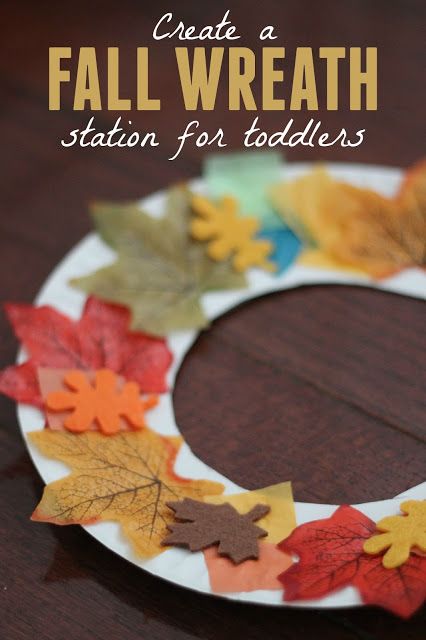
The most important part of knitting is the creation of new stitches. There are many methods to make an additional stitch. Some increases are invisible while others have distinct effects on the fabric. It is important to know the differences in increases so that you can make informed knitting decisions. Knowing how to read a pattern is also important. Understanding the types of increases used in a pattern will help you understand the designer's intent.
Double and single increases are both the most common types. Double increases are when you add two more stitches to an existing piece of work. Double increases allow you to add three stitches to an existing stitch. In either case you will work the new stitch into the strand between the existing ones. Both increase work into the back of the stitch, tightening it. Some increases are more subtle than others. Others slant to the left or right. It can be difficult to identify a pattern due to these differences.

Single increases are one of the easiest ways to make an increase stitch. These increases are usually worked on the right side. They are also one of the most versatile. They can be used to increase or decrease the number of stitches at the end of a row.
M1 increases are another common type of increase. They are usually used along the edges of garments. It is a horizontal loop of yarn that is worked between the stitch on the left needle and the last stitch knit off the left needle. When a pattern requires an increase, M1 increases will usually be required. There are two types of M1R increases: the M1L. M1L can be considered the default M1-stitch. However, the M1R may be easier to master.
Bar increases are another popular technique for increasing stitch count. They are best done on the knit, but can also be worked on both the purl and knit sides. They are often referred to as make-one increases. They create a line that falls to the right of an increase. They can sometimes be used to replace knit front or back increases. They can be very decorative and are an excellent way to make decorative holes in your lace. Depending on what fabric you are using, they may be more obvious or less noticeable than a tighter rise.
There are also knit front- and back increases. A twisting stitch is another option. These increases are made by knitting into the exact same stitch twice. They reduce the amount of bar in the standard knit back and front. Twisting stitch looks similar to a wheat sheaf. These increases appeal to beginner knitters.

The increase stitches are an essential part of knitting. Understanding them can help to better understand the designers' intentions. Some increases are hidden within the seams while others create a bump in your fabric. You will be able to better read the pattern and make informed knitting decisions if you know how to recognize which types of increases.
FAQ
What's a hobby?
A hobby for kids is any activity they like to do as part of their normal daily routine. You might find them interested in drawing, building things, painting, writing stories, playing with toys, listening to music, reading books, watching TV, and playing computer games. They may also like to play soccer, football, basketball, cricket, rugby, baseball, and hockey.
Many parents are concerned that their children may get into trouble if allowed to do as they please. It is not true. They won't get into trouble if your child is safe and does not cause harm to others or themselves.
It is important that people remember that simply because they love doing something does not mean they will always do it. If they don't like writing but love drawing, they might choose to draw images instead.
There are many different hobbies, so it is up to you which one you love the most.
Why do we need hobbies
Hobbies are an integral part of our daily lives. They allow us to relax, unwind and think creatively. Hobbies offer opportunities to develop new skills as well as life-long interests.
Hobbies allow us to find meaning in our lives.
They are great for spending your free time when there's not much else.
And they're fun!
If you don't have time for a hobby, then you probably don't have time for anything else either.
So take a look at all the options available to you. If you don't have a hobby yet, then maybe you should start one today!
What are some hobbies that seniors might enjoy?
Senior citizens should be able to enjoy activities that they are passionate about. They should also be active and take part in activities such as sports or other physical activities.
They may wish to join clubs, where they can find others who have similar interests. This way, they'll feel less lonely as they age.
Senior citizens need to be aware of the latest trends. For example, they could follow fashion, art, music, literature, politics, etc.
What does a hobby really cost?
Hobby costs nothing except time. It can take many years to accomplish what you desire if you are serious about it.
There is one thing that will help you. It's called passion. If you feel passionate about your chosen field, you'll find it easier to put in the work required to achieve your goals.
After you've put in hours, you might become addicted. This is where the real joy begins. Because now you are doing something you enjoy, and you are getting better at it all the time. By the end of the year you'll have probably made a lot of progress.
Don't fret about how long this takes. Don't be afraid to try. You might be surprised by what you find!
Is it possible making a living as a hobby?
Not necessarily.
You could be wealthy if you have a passion for starting your own business.
Let's take, for example, that you love cooking. You enjoy healthy food so you opened a restaurant.
You only prepare organic meals from scratch. To cover the labor and ingredients costs, you will charge your customers a small service fee.
You can grow your clientele over time and eventually hire employees who will work alongside you.
Soon, your menu will include gluten-free and vegan options as well as desserts.
This is how you have created a successful company that has enabled you to enjoy the lifestyle you desired.
But, it doesn't mean your day job must be abandoned.
You could also run your restaurant, while still maintaining your 9-5 job.
What are some hobbies that would suit introverts?
Introverts are able to concentrate on one thing at once. They like solitude activities such as reading and writing, listening to music and watching movies.
They also enjoy quiet time. They are not social creatures and don't want to be around people all day. They often feel bored when they are surrounded by people.
This is why introverts often choose hobbies that require them to be alone. An introvert might like to read, listen to music, take photographs, paint, write poetry, or even create art.
Many introverts choose to live alone. They can concentrate on their hobby without being distracted.
How do I find a hobby to pursue?
You may feel overwhelmed when you start your quest to find a hobby.
You might think, "I'm not very talented," "I struggle at sports," "I don't really know anything."
There is a good chance that you have some experience with hobbies.
It's just that you haven't realized it yet.
Take a look at the contents of your home. How much stuff are you able to store?
Do you have any toys from the past?
Perhaps you have a collection.
Perhaps cooking has been something you've wanted to do all your life.
Or perhaps you would just like to learn how to play the guitar again.
Whatever it is you're interested in, you can make it a hobby.
Realize that you have many experiences already.
Once you have done that, you will be able choose a hobby that suits your lifestyle.
Statistics
- I am 100% biologically a woman (discover.hubpages.com)
- The intensity of the dialogue partners' bond at the end of the forty-five-minute vulnerability interaction was rated as closer than the closest relationship in the lives of 30 percent of similar students. (time.com)
- Almost 80% of people claim to have no hobby. (hobbylark.com)
- Much of this decline reflects the fact that teens are less likely to work today than in the past; among employed teens, the amount of time spent working is not much different now than it was around 2005. (pewresearch.org)
- A new survey by Pew Research Center of teens ages 13 to 17 finds that 36% of girls feel tense or nervous about their day every day; 23% of boys say the same. (pewresearch.org)
External Links
How To
How to Choose the Right Hobby For You
If you ask yourself some questions, you may be able to tell whether your hobby is right for you:
-
Do I enjoy doing it?
-
Is it a pleasure?
-
Is it something I would like to keep doing even when I'm older?
-
Can I do it well?
-
Can I improve?
-
Would I recommend it?
-
Will it bring you happiness?
-
Will it help me to relax?
-
It will make me feel better about my self?
-
Will it teach me skills that I can use later in life?
-
Can it help me make new friends?
-
Is it possible to express my creativity with it?
-
Will it offer me opportunities to learn new things?
-
Will it give me confidence?
-
Do I feel accomplished?
-
Is it possible to achieve financial success?
-
It will allow me to travel.
-
It will allow me to travel new places.
-
Is it going to encourage me?
-
Will it encourage me to work harder and do I feel inspired?
-
Can it motivate me and help me succeed?
-
Do I have to take part in activities that I don't normally think of?
-
Is it going to challenge me?
-
Will it be exciting?
-
Can it keep you fit?
-
Will it save money?
-
Can it lower stress levels
-
Will it stop boredom from happening?
-
Will it free up my time?